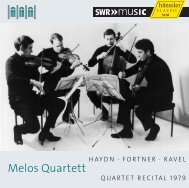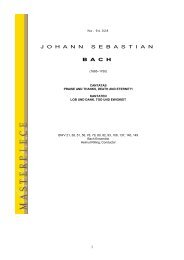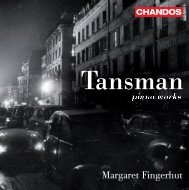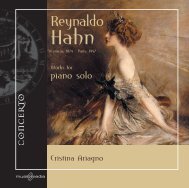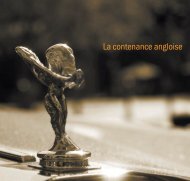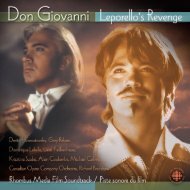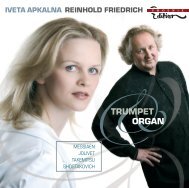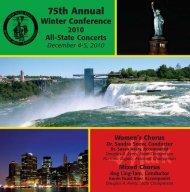LIBRETTO - Naxos Music Library
LIBRETTO - Naxos Music Library
LIBRETTO - Naxos Music Library
You also want an ePaper? Increase the reach of your titles
YUMPU automatically turns print PDFs into web optimized ePapers that Google loves.
ooklet472.qxd 18/02/2005 14.34 Pagina 13<br />
in keeping with the new taste. Gomes is in a different<br />
league, in any case, from Stefano Gobatti, who was<br />
successful with Goti – an opera in which the imitation<br />
of Wagner is plain from the very first note of the<br />
Prelude – but after revealed all of his intellectual and<br />
creative inadequacies. Together with Ponchielli,<br />
Gomes is one of the more interesting and less-known<br />
composers of Italian opera of his times. The revival of<br />
Salvator Rosa – and hopefully, in the future, of other<br />
works of his – is an important step towards a full and<br />
complete understanding of the Italian late 19th-century<br />
operatic panorama.<br />
Neither Gomes nor Ponchielli were able to develop a<br />
true alternative to Verdi’s style; as, instead, the<br />
Giovane Scuola would some fifteen years later. In<br />
Salvator Rosa, decorative and colouristic effects<br />
devised to enthuse the audience – like the already<br />
mentioned Neapolitan song Mia peccerella (which<br />
Gennariello sings in act one and then again in act<br />
four), or marches and choruses of soldiers and people<br />
– are always set in a solid music structure, in which the<br />
traditional closed numbers, like in the mature Verdi,<br />
appear in a musical continuum reminiscent of contemporary<br />
French and German opera. Even though it<br />
does not possess the glowing musical vein of Guarany<br />
– an opera with echoes of Brazil – Salvator Rosa is a<br />
solid work, with an atmosphere that under many<br />
aspects recalls that of Verdi’s Simon Boccanegra, and<br />
able to capture the listener with its very effective<br />
pages. Concertati, like for example the one concluding<br />
Act two, are spectacular and worthy of Verdi, and<br />
sometimes so close to his style that an inexperienced<br />
ear may be fooled. The role of Masaniello – a man of<br />
the people who, like Simon Boccanegra, rises to<br />
power – is subtly developed into a well-defined musical<br />
profile; this character’s second act aria, Povero<br />
nacqui, has a declamato of unquestionable expres-<br />
13<br />
sive power. One of the best passages of the entire<br />
opera is the aria of the Duke of Arcos (for bass) Di<br />
sposo, di padre, one of the few by Gomes that are still<br />
in the repertoire; moreover, there is a wonderful scene<br />
between the Duke and his daughter Isabella, Sola il<br />
mio bianco crine, an ample and articulate page which<br />
concludes the third act with high-quality music and<br />
great theatrical effect.<br />
Danilo Prefumo<br />
(Translated by Daniela Pilarz)




